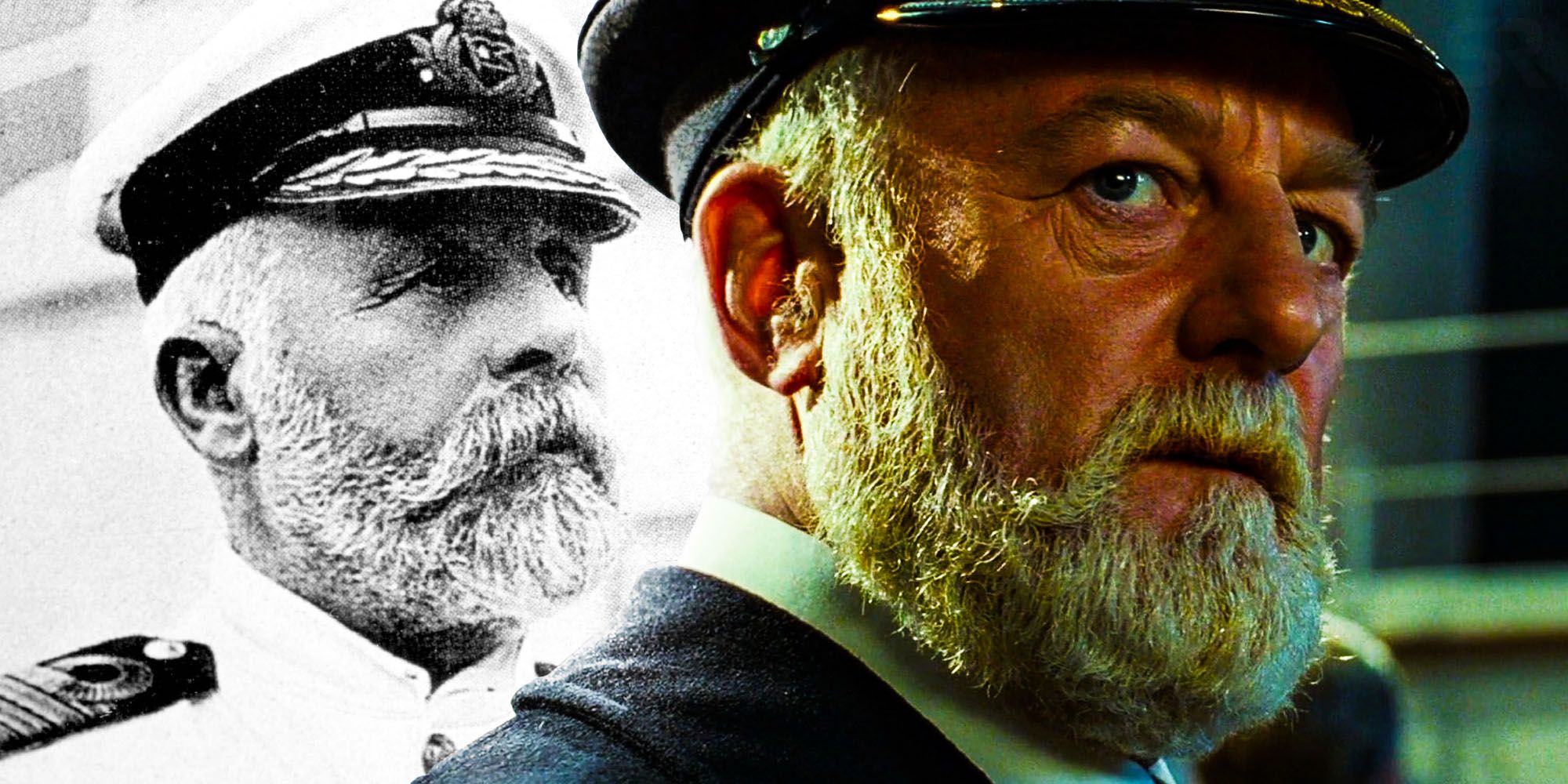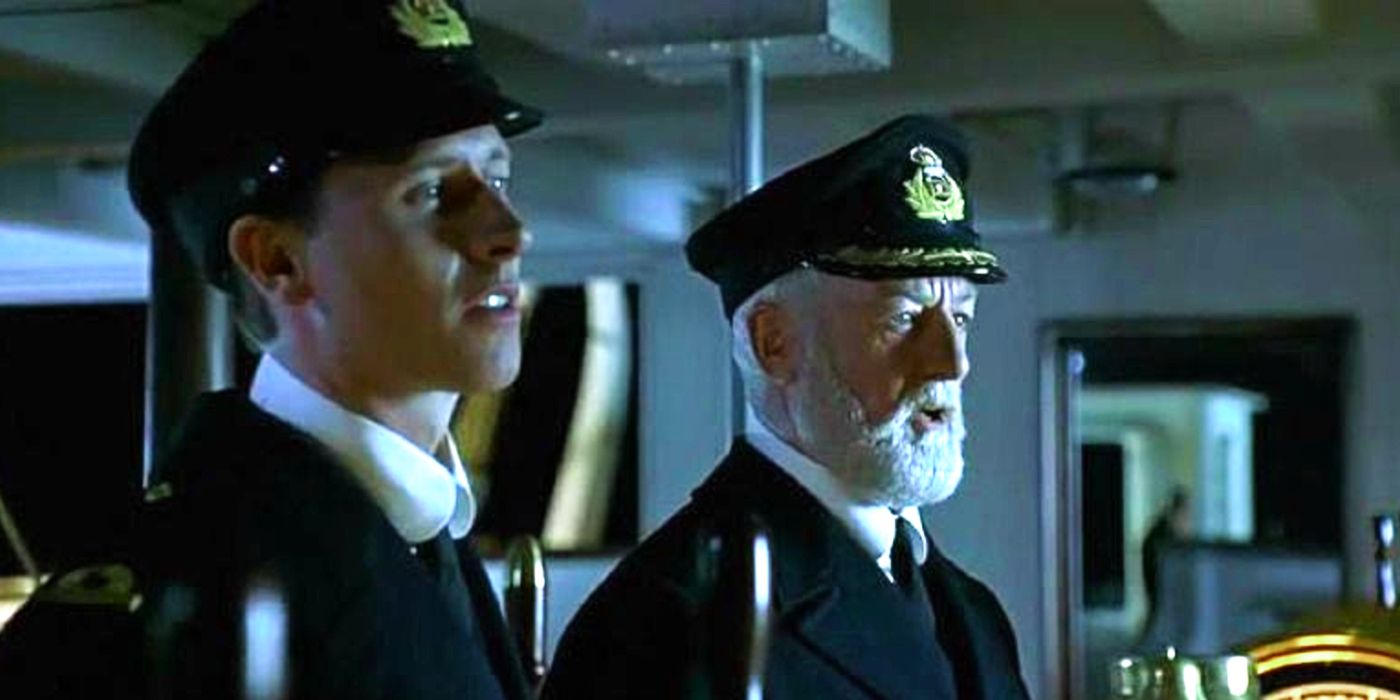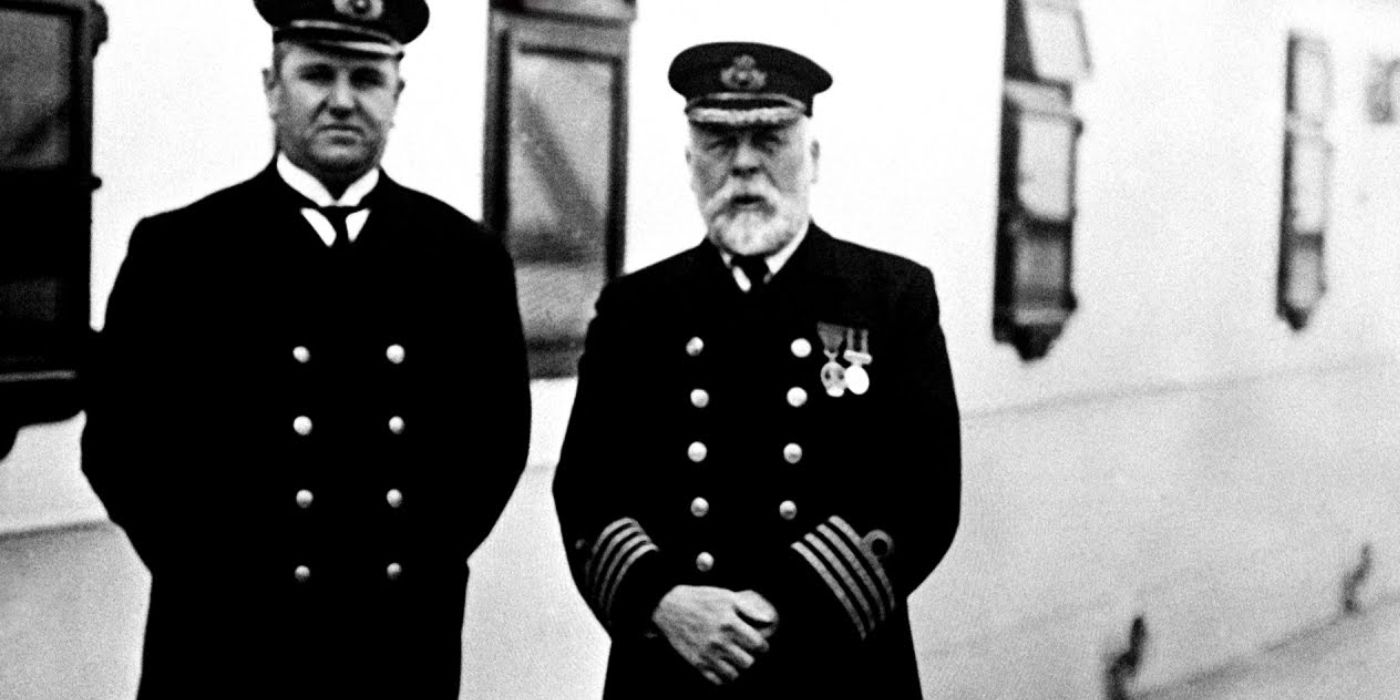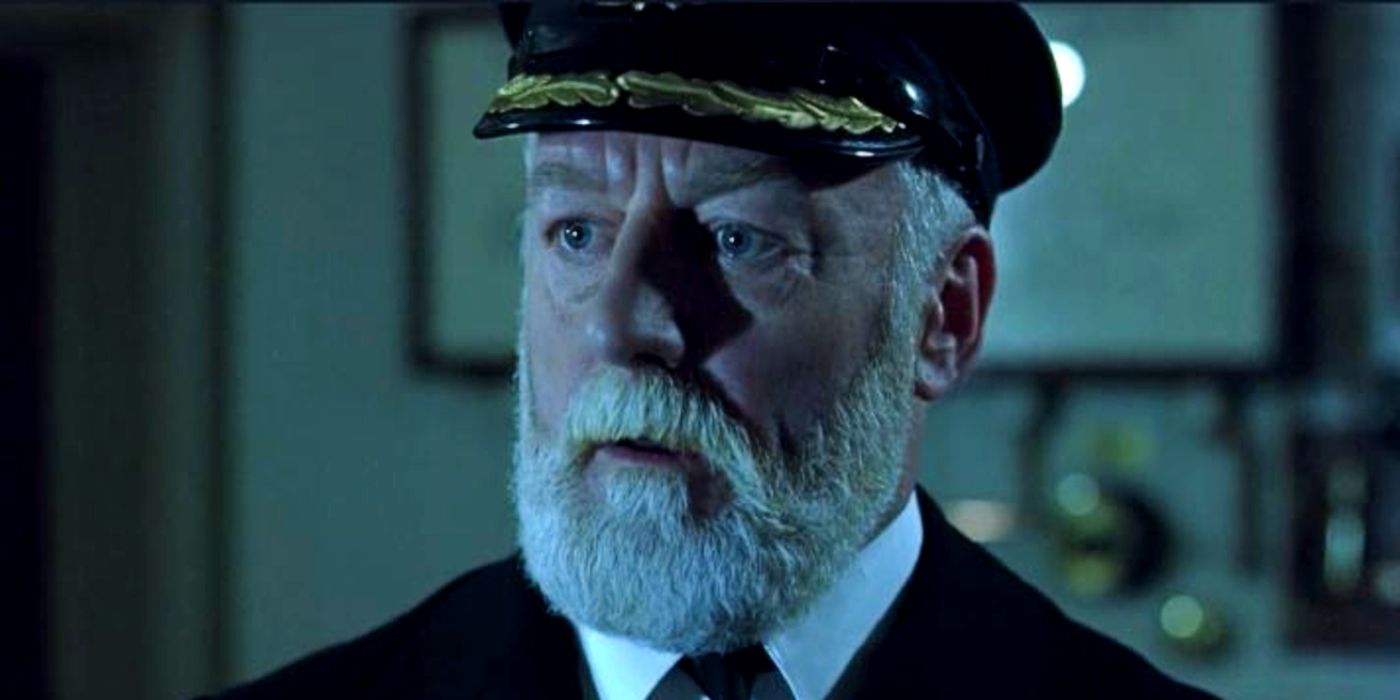
Little is known about the final hours of Captain Edward John Smith on Sunday, April 14, 1912, the day the Titanic sank during its maiden voyage across the Atlantic. The accounts surrounding the final hours before the sinking of the RMS Titanic are varied and conflicting, especially when it comes to the actions and whereabouts of Captain Smith. James Cameron’s Titanic attempted to weave a dramatic retelling of the tragic events of the night, whilst being an amalgamation of fact, fiction, and historical inaccuracies.
While crafting a cinematic retelling of events rooted in tragedy can be a daunting task, there is no shortage of historical records, albeit conflicting and often ambiguous in nature, when it comes to what occurred on the ship. As expected of any artistic retelling, Cameron’s Titanic featured several altered versions of the actual events, which is understandable due to the factors of dramatic license and narrative ambiguity. However, despite being somewhat faithful to history, such as the basing of the character of Rose on actual Titanic passenger Beatrice Wood, the film was subject to several controversies in terms of its narrative decisions.
As a ship’s captain is primarily responsible for the smooth functioning of a voyage and is expected to act in ways conducive to the safety and wellbeing of its crew and passengers, Smith’s actions in the wake of the tragedy have been under scrutiny. Due to the nature of the sinking, and the conflicting eyewitness accounts about its details and aftermath, it is indeed difficult to discern fact from fiction. Here’s an attempt at piecing together the final hours of Captain Smith, along with the tentative reasons why Cameron’s movie altered certain aspects in the portrayal of his character.

Captain E.J. Smith spent more than 40 years at sea, having been rarely involved in accidents or being held accountable for one. On the contrary, the captain was responsible for successfully commanding ships such as the Baltic, Adriatic, and the Olympic, and was generally known for his stoicism and fortitude in the face of adversity. However, how the captain spent his final hours before the tragic death of more than 1,500 passengers and crew is still mired in colorful accounts and ambiguity, making it difficult to know the truth of his ultimate fate. So much so that five different accounts of Smith’s death exist in terms of eyewitness accounts and speculation, all of which have been chronicled in much detail in author Wyn Craig’s The Titanic: End of a Dream. As per Craig, rumors of the captain’s survival also circulated shortly after, along with wildly varying accounts of his final words.
An article in the Halifax Morning Chronicle on April 9, 1912, stated that Smith would remain in charge of the Titanic until the completion of “a larger and finer steamer,” which conflicts with rumors that he had decided to retire after completing Titanic’s maiden voyage. On April 10, Smith is said to have onboarded the ship at 7 AM, having taken quick action to avert a break-away of another ship’s moorings, which could have potentially swung toward the main vessel. After this, while the first four days of the voyage seemingly passed without incident, radio operators received six warning messages of drifting ice, which even passengers had begun to notice on the afternoon of April 14. Although Smith reportedly posted this urgent message on the ship’s bridge and relayed it to Joseph Bruce Ismay, chairman of the White Star Line, he is known to have attended a private party held by Mr. and Mrs. George Dunton Widener in the ship's a la carte restaurant. By this time, another ice warning from the Californian was sent to another ship in its fleet, which was apparently overheard by the crew of the Titanic.
At around 10 PM, after a conversation with second officer Charles Lightoller on the bridge, Smith is said to have turned in for the night, despite the operators being swamped with several warning transmissions. Despite being aware of ice in the vicinity, the crew reportedly did not reduce the ship’s speed and continued at steam at 22 knots, which is roughly 25 mph. At around 11:40 PM, a crew member spotted an iceberg in the ship’s path, and the vessel scraped against the formation shortly after, allowing seawater to rush in. The first distress call was sounded after midnight and in the meanwhile, Smith was informed by First Officer William Murdoch that the ship had just collided with an iceberg. Soon after, vessel designer Thomas Andrews reported that all of the first five of the ship's watertight compartments had been breached and that the Titanic would sink in under two hours.
This is the point wherein accounts get murky, which is understandable given the dire circumstances. Some accounts, including that of Major Arthur Godfrey Peuchen, portray Smith's actions as heroic, wherein he did everything in his power to prevent panic and assist in the swift evacuation. Peuchen also stated that Smith had prioritized the evacuation of women and children, whilst supervising the proper lowering of the lifeboats from the bridge. On the other hand, several eyewitness accounts directly counter this rosy portrayal, as some sources believe his actions to be “inactive and ineffective” when it came to preventing the loss of life. As per maritime historian Paul Louden-Brown, Captain Smith allowed lifeboats to leave partially filled, with the first boat with the capacity of 65 people leaving with only 27. Some of the surviving crew have also reported that the captain did not issue a general “abandon ship” order, which if true, would serve to downplay the severity of the night’s imminent tragedy.

Smith is said to have been traumatized by shock as per several accounts, which purportedly hampered his decision-making abilities. John Graves stated that “Smith seemed to have vanished into the ether” during the ship’s final hours while failing to adequately organize the crew and convey crucial information to officers shortly before. This is corroborated by reports that some of his bridge officers were still unaware of the direness of the situation well after the collision, with Fourth Officer Joseph Boxhall not finding out until 1:15 AM, barely an hour before the ship sank. Moreover, baffling accounts of Quartermaster George Rowe also later made the rounds, many of which state that he was so utterly unaware of the situation that he inquired as to why he had seen a lifeboat go past after the evacuation had already started.
Although it is near impossible to pinpoint the captain’s whereabouts right before the ship sank with certainty, it has been reported that Smith carried out a final tour of the deck, telling crew members: “Now it's every man for himself.” At around 2:10 AM, Steward Edward Brown reportedly saw the captain approach with a megaphone in hand, urging the crew to do their best for the women and children and to look out for themselves, after which he walked onto the bridge alone. Brown’s sighting of Captain Smith is regarded as being closest to the latter’s final moments, although Trimmer Samuel Hemming purportedly found the bridge empty moments after. Five minutes later, at around 2:15 AM, the ship disappeared beneath the ocean, while it is believed that 1500 passengers and crew, along with Smith himself, perished that night. To this day, Smith’s body has not been recovered.

In Cameron’s Titanic, Captain Smith, as portrayed by veteran actor Bernard Hill, is seen standing in the wheelhouse awaiting certain death before the waters crash through the windows. While Cameron attempted to resolve much of the ambiguity surrounding the tragedy and the captain’s actions, whereabouts, and final moments, his portrayal leans towards accounts that paint him as apathetic and ineffective. In the film, Captain Smith is shown unaware of the fact that the ship was heading for a collision course until much later, which is reportedly untrue, as accounts state that he was informed about the imminent impact sometime before. Cameron also decided to portray Smith as clearly indecisive for the most part, such as the scene in which he simply stands and watches Officer Lightoller try and launch collapsible Boat B while ignoring the anxious queries of a third-class passenger.
While these alterations might have been made in order to add to the poignancy of the disaster, and the utter inability of the ship’s captain in the wake of the disaster, it can be argued that Cameron’s Titanic does not seem to do justice to Smith’s legacy. While it is unclear whether he consciously deprioritized the lives of passengers and crew, Smith did release crewmen of their duties and actively assisted in the loading and launching of the boats, although the details differ. However, if Hemming’s account is to be taken into consideration, it would be fairly accurate to situate Smith’s final moments in the ship’s wheelhouse, which is where the film depicts Smith holding on to the wheel before being engulfed by water. Nevertheless, art can only capture a fraction of history despite one’s best efforts, as the truth is often stranger than fiction.
from ScreenRant - Feed https://ift.tt/3wKb6h3

0 Comments